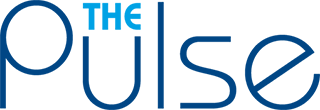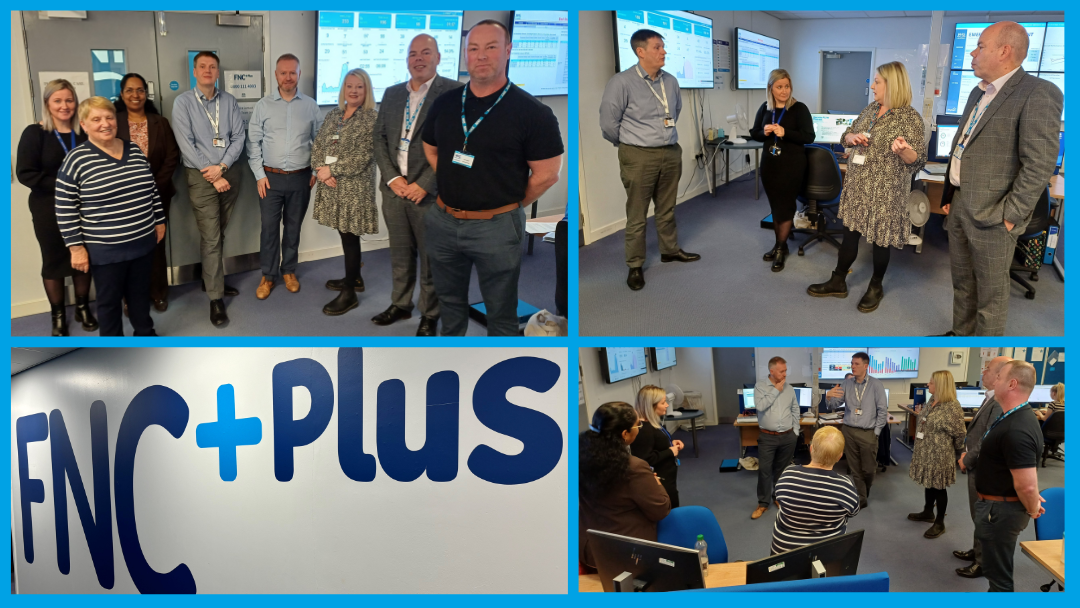As Firebreak goes live, the wider Interface Directorate will have an active role in supporting Team Lanarkshire’s broader aims.
Senior team members from the Interface Directorate have been assigned to collaborate intensively with colleagues across the health and care system. One of the main objectives is to help staff understand the new Directorate’s values, the core systems in place, and how they operate. Most importantly, the team will emphasise why the work of the Interface Directorate is essential.
NHS Lanarkshire’s senior leaders have visited the Flow Navigation Centre Plus (FNC+Plus). It’s the nerve centre of the Interface Directorate’s ongoing efforts to support coordinated, advanced, and timely care to patients during some of the most vulnerable moments of their lives.
You too can learn more about FNC+Plus – and the broader work of the Directorate – in our FAQ. Trudi Marshall, NHS Lanarkshire’s Interface Director, provides clear answers to key questions.
Read our FAQ here:
Interface Firebreak Frequently Asked Questions
The Flow Navigation Centre Plus (FNC+Plus) is the nerve centre of the Interface Directorate’s ongoing efforts to support coordinated, advanced, and timely care to patients during some of the most vulnerable moments of their lives.
You can learn more about FNC+Plus – and the broader work of the Directorate – in our FAQ.
Trudi Marshall, NHS Lanarkshire’s Interface Director, provides clear answers to key questions.
Q: Can you explain ‘Interface’ in everyday terms?
A: Imagine someone who has had a minor, but potentially costly, car accident. They call their insurance company and go through a series of options, none of which match their specific issue. After a lengthy wait, they finally speak to a representative who listens but has to transfer the call to another department. Another lengthy wait ensues before they are required to explain the situation – all over again.
In healthcare, the stakes are invariably much higher than a broken car light or dent. Despite the exceptional work and compassionate care being delivered daily by dedicated staff, the health and social care system can sometimes feel large and complex. Similarly, the pressure and demand on the system is as great as it is dynamic. For some patients — who are often in vulnerable situations — their first contact with the negotiating this system can feel similar to the insurance call example. Ultimately this experience can feel confusing, frustrating and frightening.
In essence, the Interface Directorate aims to minimise this experience by driving and influencing improvements, collaboration, cohesion and communication – the ‘interface’ – across all components of the healthcare system, from primary, hospital and community care. It works to ensure that patients receive seamless, timely care by enhancing how services are delivered.
Q: How can this be achieved in practical terms?
A: The Directorate harnesses cutting-edge technology and innovation while keeping compassion and simplicity at the forefront. For example, improving communication between different parts of the healthcare system can prevent patients from having to repeat their story multiple times. Small changes like this can have a big impact, ensuring smoother care transitions for patients and more efficient workflows for staff.
Q: What are the key principles guiding the Interface Directorate?
A: The Directorate operates on three core principles:
- Individual-centered care (Getting It Right for Everyone – GIRFE): Tailoring services to meet individual patient needs and making healthcare more personal and effective.
- Values-based healthcare: Prioritising sustainable practices and involving patients and families in decision-making to ensure care is meaningful and beneficial.
- Collaboration: Working with academia, industry, government, and community groups to co-create innovative and practical healthcare solutions.
Q: What are the main components of the Interface Directorate?
A: The Directorate includes several key components:
Live and in development:
- FNC+Plus (Flow Navigation Centre Plus): Manages unscheduled care, guiding patients to the right services quickly to improve outcomes and reduce strain on hospital resources. (See final question below)
- Virtual wards: Provides high-quality care to patients at home through remote monitoring, reducing hospital stays and offering comfort in familiar surroundings.
In the pipeline:
- System Control: Currently under development, this tool will use advanced data analytics to predict healthcare needs and manage resources effectively.
Q: We’re in Firebreak, what specific work will be progressed during this time?
A: We are really zeroing in on our collaborative efforts across the system and our team are focussing on several areas. These includes:
- Call Before You Convey (CBYC) with the Scottish Ambulance Service (SAS) This will help us reduce the need to take (or ‘convey’) patients to the hospital by providing access to Senior Clinical Decision Makers (SCDM) and Advanced Nurse Practitioners (ANP) from the ambulance service. Additionally, our partners at ABC Paramedic Services will support us to assist older people get to our frailty unit faster.
- Diagnostic virtual ward to support people to go home and await urgent investigations:
Our virtual ward helps patients go home while they wait for urgent medical tests, rather than staying in the hospital. - OPAT pathway:
The OPAT (Outpatient Parenteral Antimicrobial Therapy) pathway allows patients to receive IV antibiotics and other treatments at home or as an outpatient, instead of staying in the hospital. - Scheduling where possible to ambulatory care units – hypertension and anaemia pathways:
Whenever possible, patients with conditions like high blood pressure (hypertension) and anaemia are scheduled for treatment in ambulatory care so they don’t need to stay in the hospital.
Q: How does the Interface Directorate benefit patients?
A: The Directorate makes healthcare more responsive and patient-focused. Tools like FNC+Plus and Virtual Wards reduce wait times and unnecessary hospital admissions, while personalised care ensures that treatments are tailored to each patient’s needs. As the Directorate develops, we’ll incorporate patient stories to illustrate these functions in action.
Q: What’s in it for staff?
A: For staff, the Interface Directorate improves collaboration and streamlines processes, aiming to make work more much more manageable. The use of cutting-edge technology and expert knowledge gives staff the tools they need to make informed decisions quickly. The Directorate also fosters a more cohesive working environment, enabling teams across primary, secondary, and community care to support one another, ultimately benefiting both patients and staff by reducing pressure on the system.
Q: How is technology being used to enhance care in the Interface Directorate?
A: Technology underpins all aspects of the Directorate, from digital systems that speed up patient processing to remote monitoring that supports patients at home. These tools ensure that care is efficient, proactive, and tailored to individual needs, combining innovation with compassionate care.
Q: How important is the expertise of staff in this change?
A: The Flow Navigation Centre Plus (FNC+Plus) provides a compelling example. It is at the heart of NHS Lanarkshire’s efforts to transform the health and care system. While it may look like a high-tech control room with walls of screens displaying real-time data, it’s powered by the compassion and expertise of its staff. The team include nurses, consultants, and Scottish Ambulance Service staff, who use their shared experience and dedication to guide patients through some of the most vulnerable moments of their lives. Liaising with health and care colleagues from across Lanarkshire 24/7, they do this by directing patients to the right part of the system, so care can have provided in the right place and the right time.
Technology supports this care, but the driving force is the collective experience and compassion of our remarkable staff.
Firebreak background
The Firebreak initiative focuses on improving safety, quality of care, and staff wellbeing. This vital programme will help create lasting, positive change for everyone across NHS Lanarkshire.
During the Firebreak, we aim to:
- Lower occupancy rates in our hospitals
- Fewer patients boarding in non-appropriate areas
- Improved patient experiences and outcomes
- Create a more satisfying work environment for our staff.
A new FAQ document has been published with all you need to know about Firebreak ’24: Sustainable Change, Safer Care. Click here to find out more about what Firebreak will achieve, how you can play your part and the sustainable change that teams are working together to deliver.
Feedback and Engagement
We highly value your feedback and encourage you to actively participate in shaping Firebreak ’24:
- Feedback Channels: Please use our dedicated email address operationFLOW@lanarkshire.scot.nhs.uk to share your thoughts, suggestions and questions
- Stay Engaged: Discuss in your teams and stay updated through our weekly internal communications.
- Find Out More: Visit our webpages to find out more about Operation FLOW: www.nhslanarkshire.scot.nhs.uk/OperationFLOW/
Together, we are not just addressing the challenges of today but building more resilient services for the future. Your dedication and commitment to this important initiative is crucial to the improvement of our system.
#TeamLanarkshire



